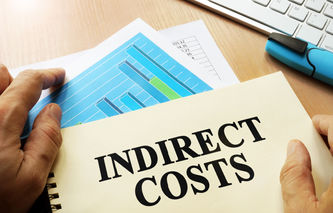Definition
The financial accounting term direct cost is used to describe those costs that have a clearly attributable relationship to a product or service being performed or the level of services being performed for a customer. Direct costs can include labor, material, and other expenses associated with manufacturing a product or providing a service.
Explanation
In the accounting profession, direct costs are those assigned to only one cost object. These include labor, material and other costs that are not allocated to a product or service, but are directly attributed to manufacturing the product or providing the service.
Examples of direct costs can include labor, raw materials, direct supervision, and supplies.
Direct versus Indirect Costs
Indirect costs are those not directly attributed to a single cost object, and are oftentimes easy to identify since they're usually allocated to multiple products or services. Indirect costs typically include fixed costs and overheads such as utilities, office space, warehousing, executive salaries, and bulk supplies such as paper. Depreciation, amortization, insurance, taxes, as well as selling, general and administrative expenses are also typically classified as indirect costs.
The approach used to allocate costs is the key to distinguishing between indirect and direct costs. For example, the selling, general and administrative expenses of a company may be allocated to each product based on the number of units sold or revenues generated. If product A accounted for 75% of revenues and product B was 25%, then product A would be allocated 75% of the company's SG&A costs while product B would be allocated 25%. In this example, SG&A is an indirect cost, since it's being allocated to multiple products.
If a team of employees are assigned to the manufacture of product A (and only product A), their salaries would be considered a direct cost. An allocation is not required to spread their salaries across several products; it is directly assigned to one cost object: product A.


